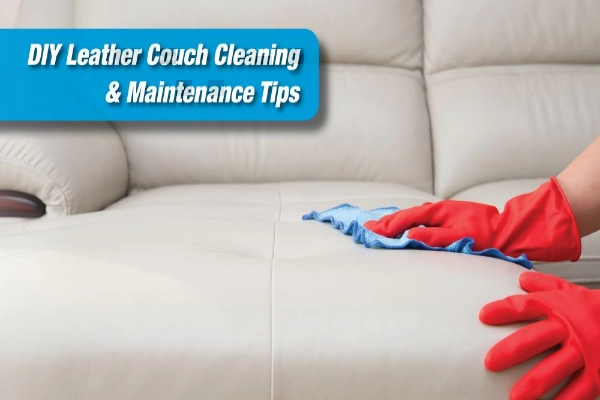
There’s no better feeling than having a fresh, clean home to relax in. Hiring a professional sure takes the time, effort and hassle out of doing it yourself, but that’s not always in everyone’s budget. And while you can hire someone to clean almost anything, some tasks are easily done yourself. Cleaning and protecting your leather couch for example, is much easier than you may think! Read on to see what tips & tricks we have for you today…
First, check the tags! Oftentimes your couch comes with a pretty clear set of instructions. Or at the very least, a list of dos and don’ts. It’s important to keep in mind that each sofa is different. There is a huge difference in the way you should approach a leather sofa vs. a faux leather or even a fabric upholstered sofa. Before attempting any of our tips today, please check with your manufacturer. Once you’re cleared to clean… have at it!
We’ll start with one that’s fairly obvious, and oh so easy… Vacuum your couch! Using a small hand-held vacuum a few times a week will keep your couch looking fresh despite how many bad dogs and cats get up on their despite your pleas to “get down.” Remove each cushion to get in all those cracks our crumbs, lint and pocket change nestle themselves into.
Just as easy as vacuuming, is using a lint roller! These are fantastic, cheap and easy to use. Lint rollers shouldn’t be used exclusively but are a great way to freshen up your couch and keep lint and hair at a minimum.
Something to keep in mind is that while leather is durable, it’s not waterproof. It’s porous and can absorb harsh cleaners that could potentially discolor or damage it. Never use a cleaning solution that contains ammonia or bleach. A very gentle cleanser that we like can be made with a solution of water and white vinegar. Wiping down your leather sofa with this mixture with a microfiber towel once a month will help to remove superficial stains and deodorize it. For deeper stains, or mold/mildew, a mixture of water and rubbing alcohol can be effective. Once your couch is completely dry, follow with a store-bought leather conditioner. This will help you maintain a smooth, shiny appearance and keep your leather strong.
Miscellaneous tips for “oops moments” (always test on a small discreet location first!):
- Hairspray! This can remove marker stains, for those of you with little ones who can’t seem to keep arts and crafts on the table. Ink can also be removed with eucalyptus oil – and it smells great, too!
- Darker stains such as coffee, wine or food can be tackled with a lemon + cream of tartar mix. Making a paste and lightly scrubbing with a toothbrush will help to lift these stains. Just simply wipe away with a moist towel or sponge.
- Any oily stains such as pizza grease can be absorbed with some baking soda! Simply sprinkle a bit over the affected area, wait a few hours, and vacuum it up!
Added tip: many overlook the effects the sun has on leather furniture. Leather, hardwood floors, art and more are at an extreme risk of fading and damage when continually exposed to the sun’s harmful UV rays. To prevent this, you’re faced with a few options. You could draw the blinds and curtains, but now you’re left with a dark cave of a room. Installing window film, among many other benefits, can drastically reduce fading brought on by the sun. By blocking harmful UV rays, your interior furnishings remain unscathed as you bask in the natural light without also putting your family’s skin at risk. To learn more about how window film can protect your home and family, read our blog titled: A Threat to Your Home and Family: THE SUN. To learn more about how window film can actually improve the interior design of your home, read our blog titled: Maximize a Small Space with Window Film.
